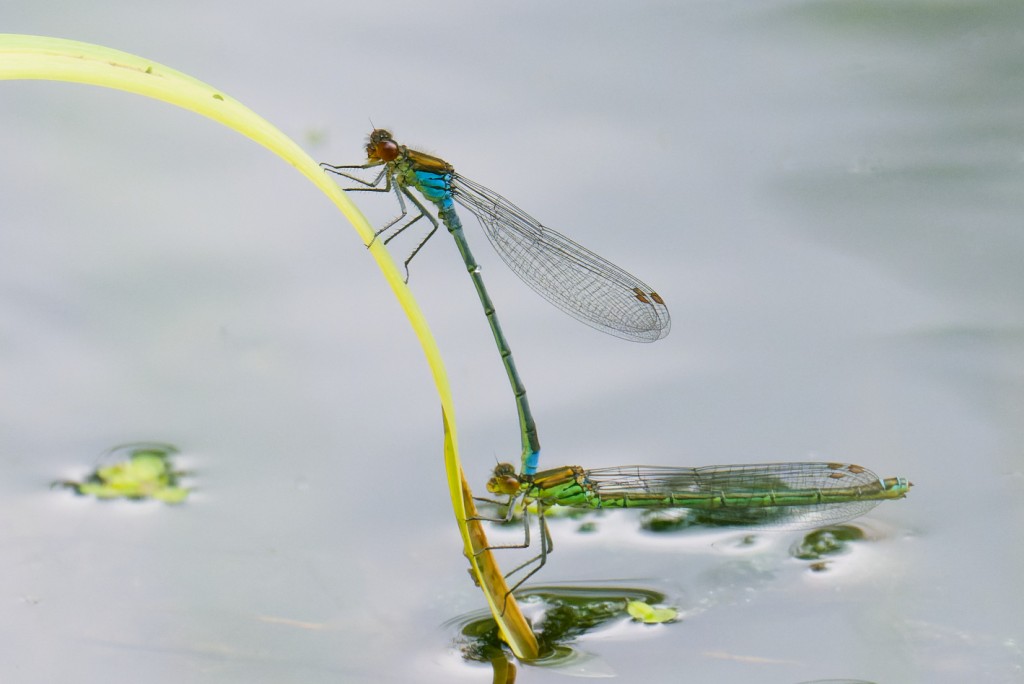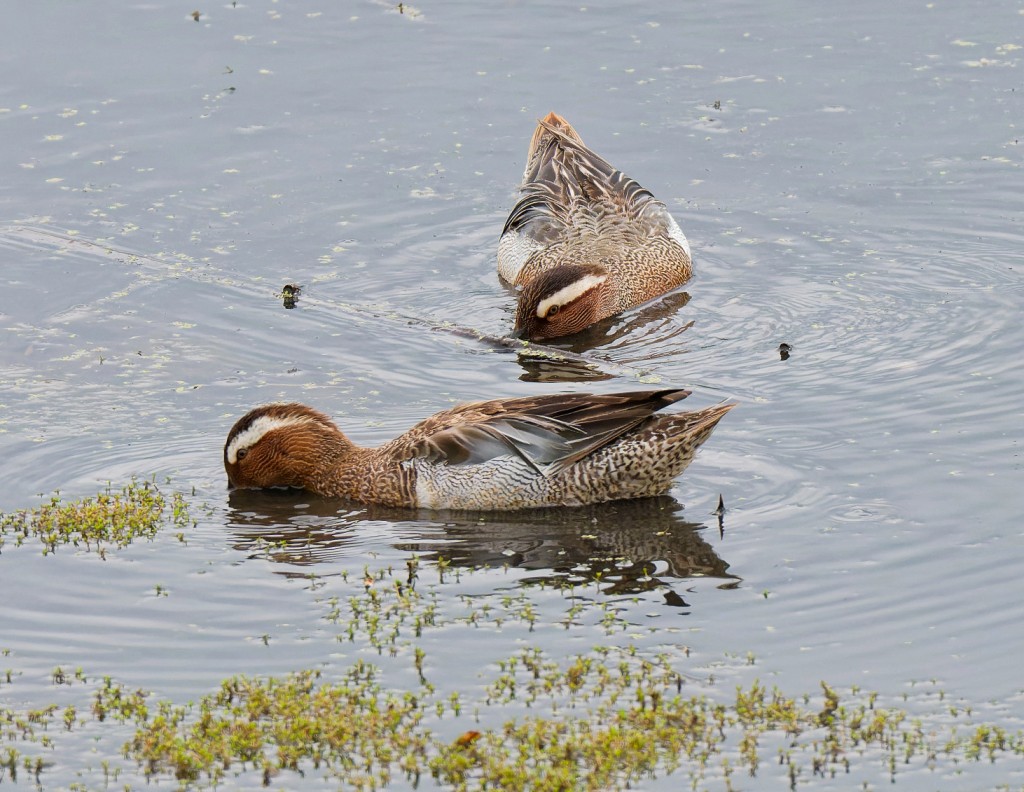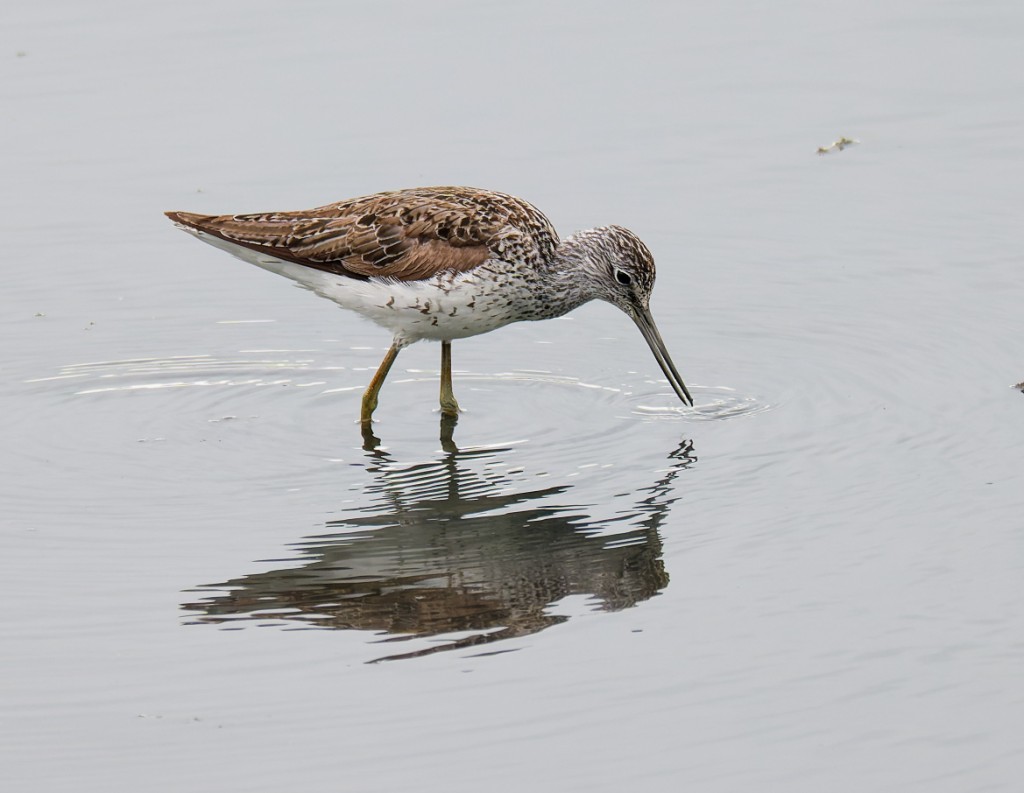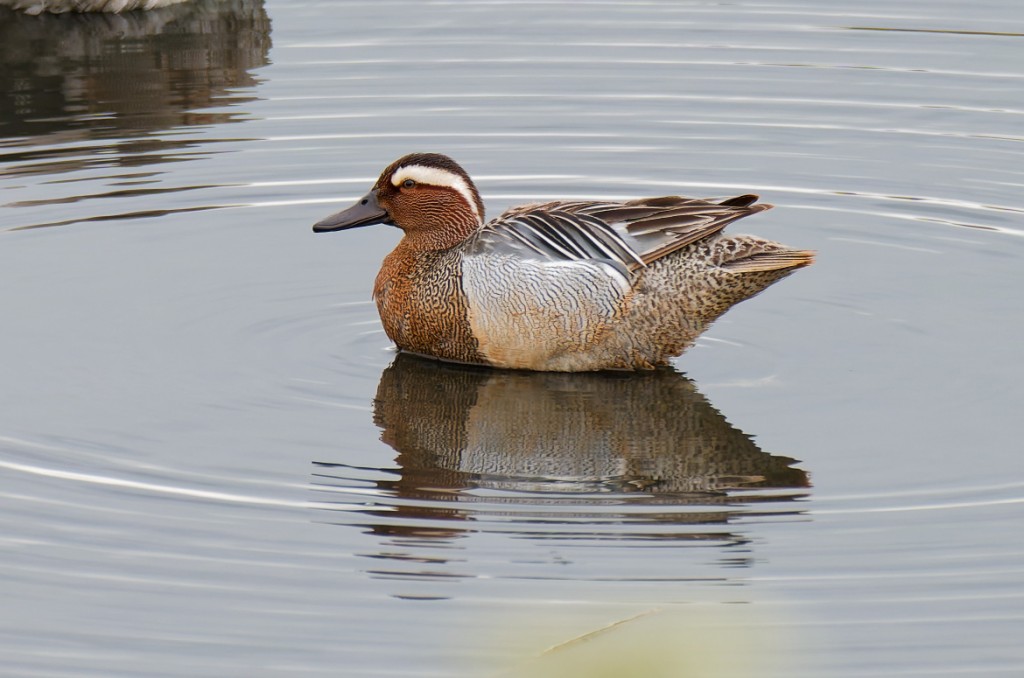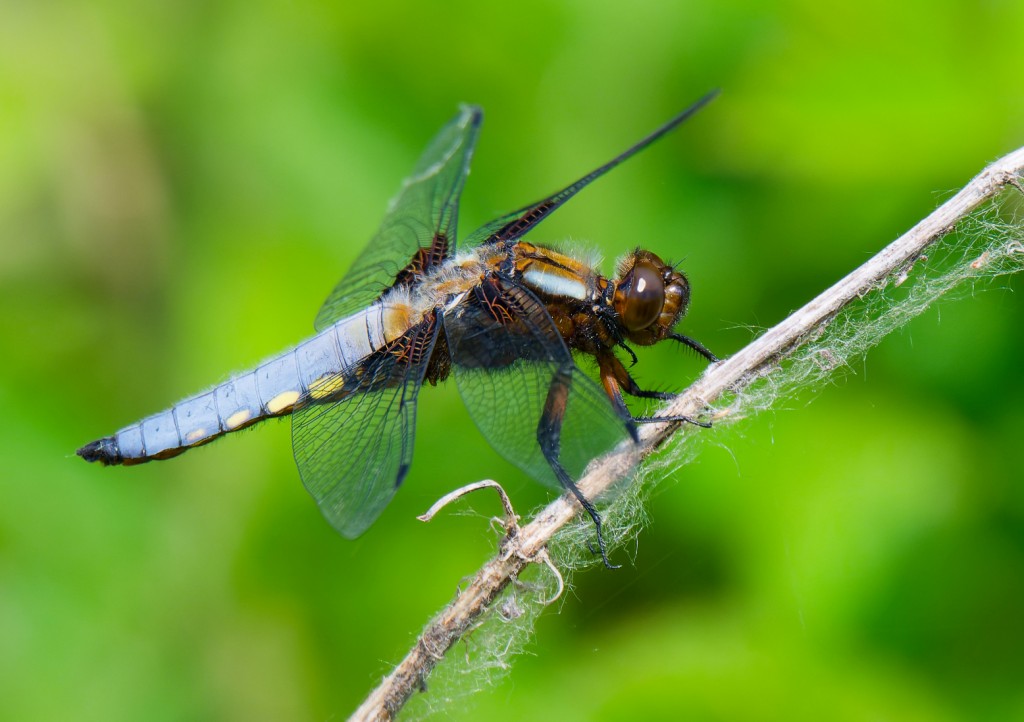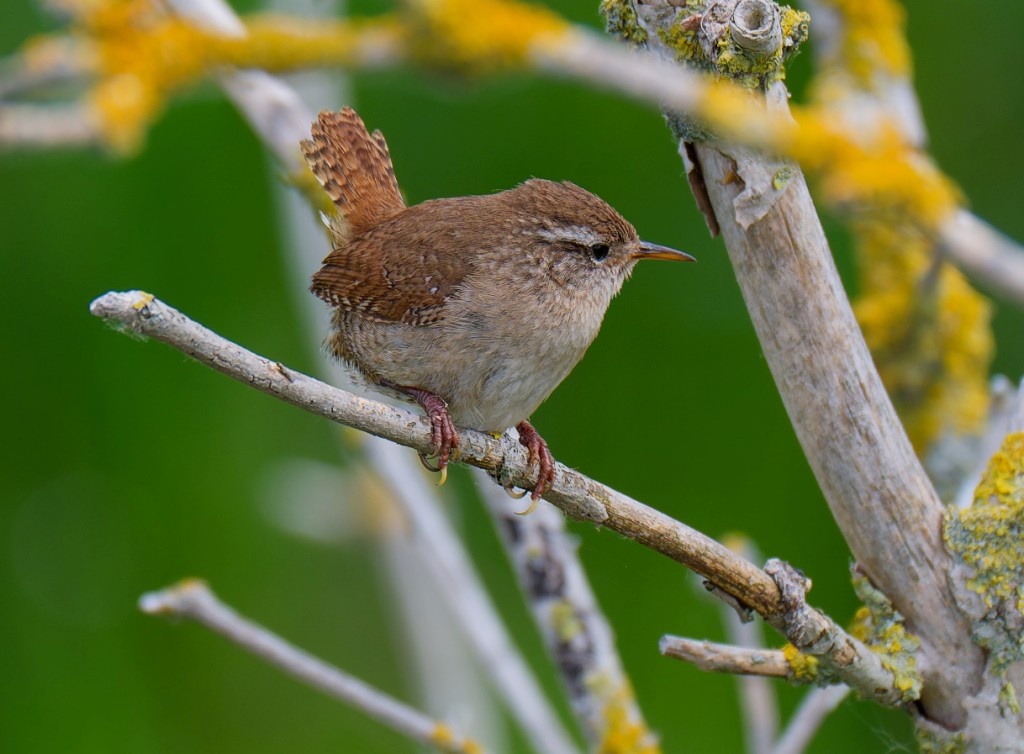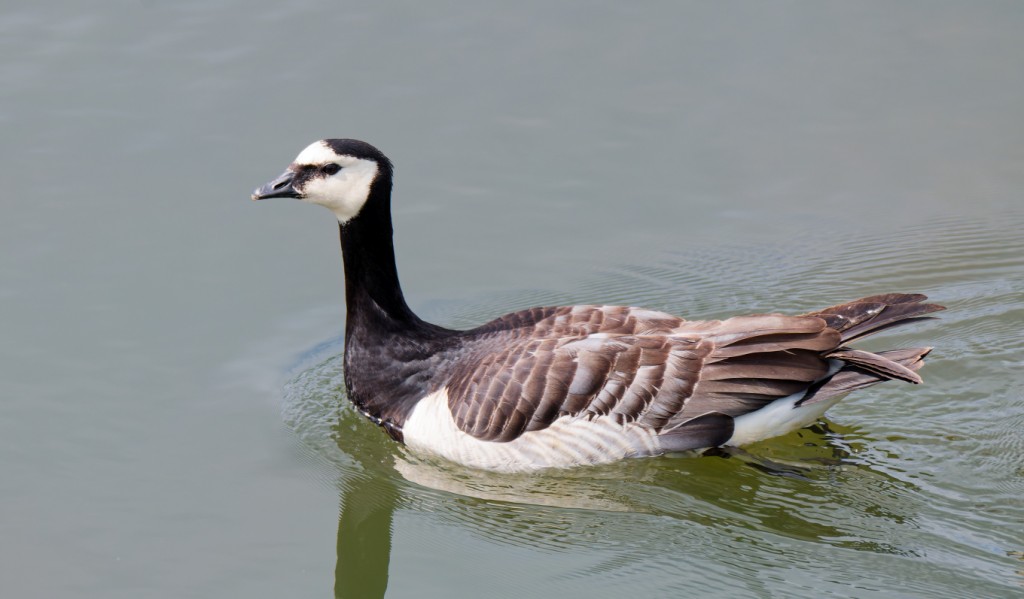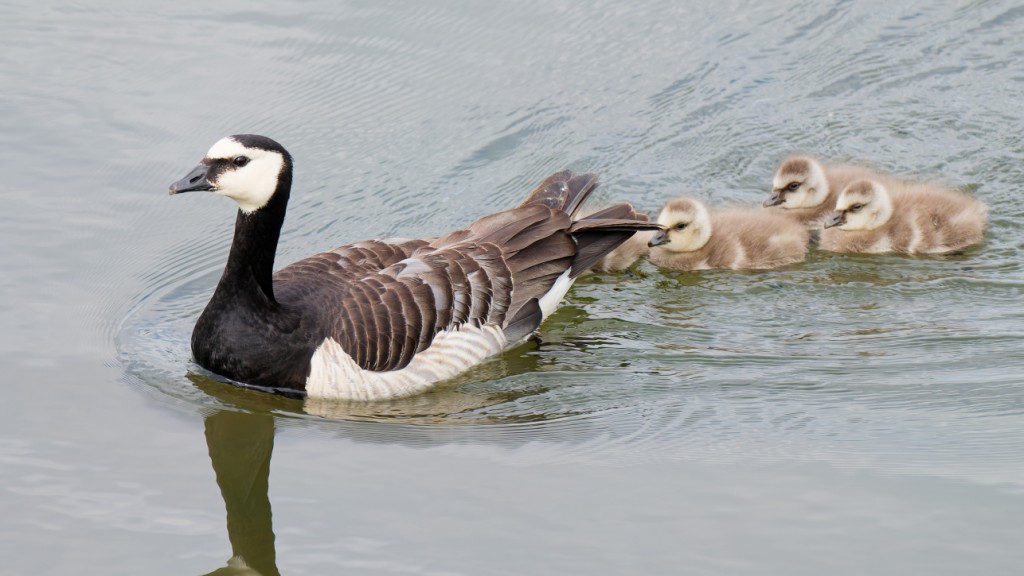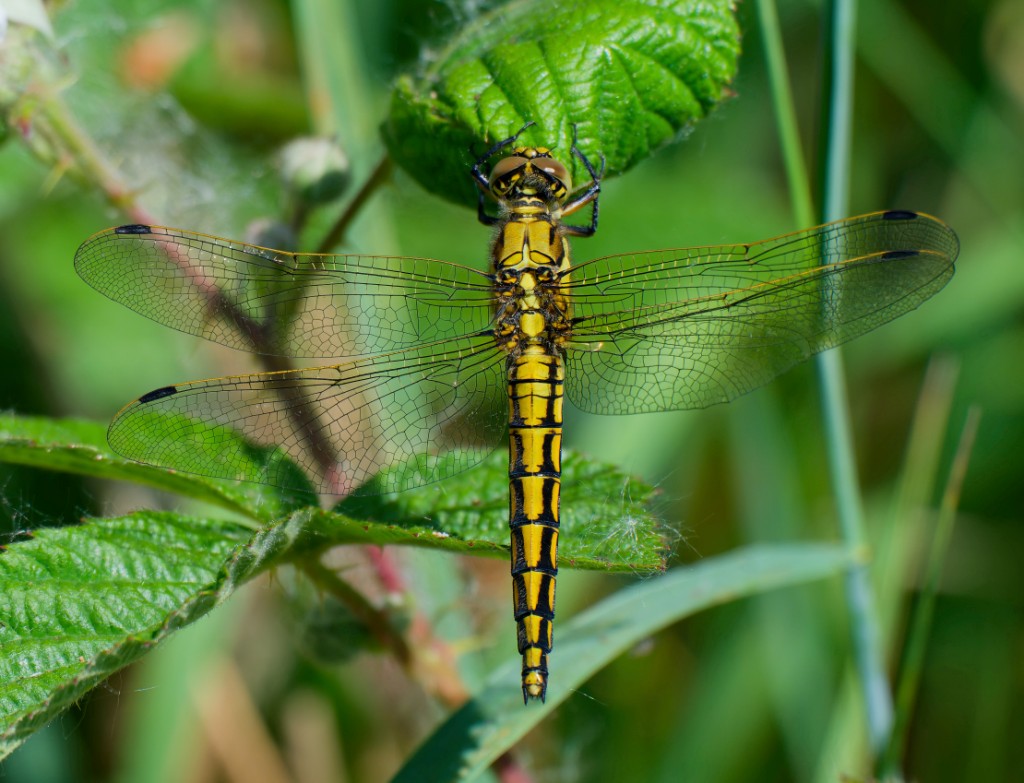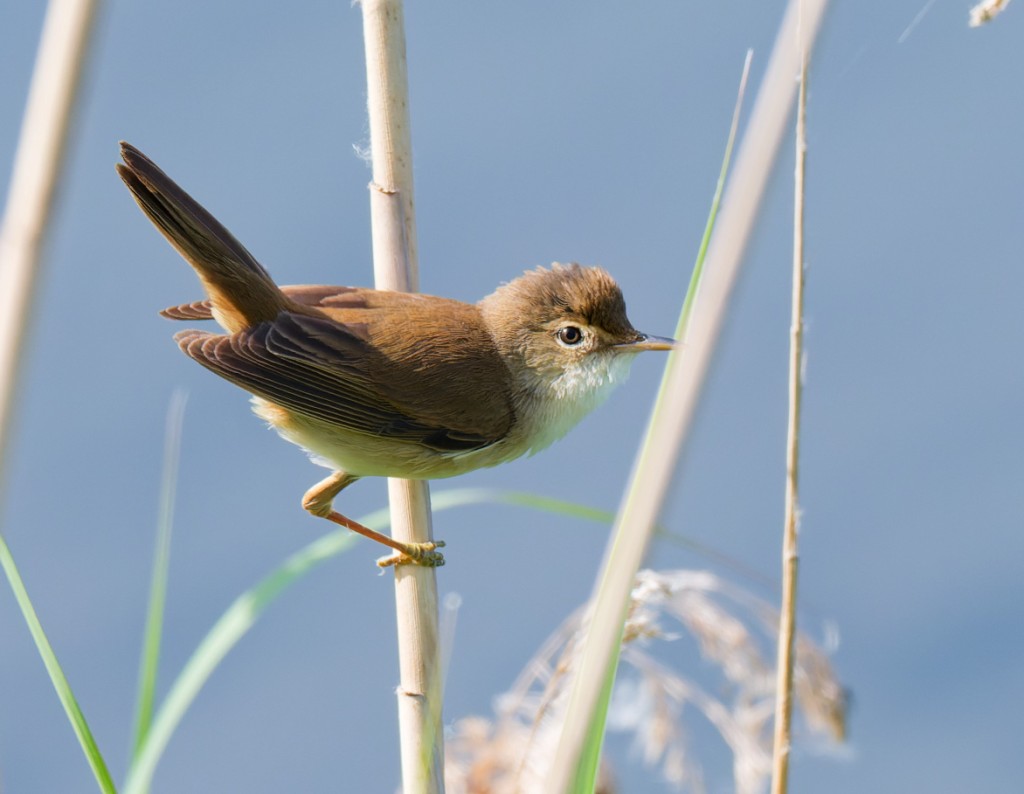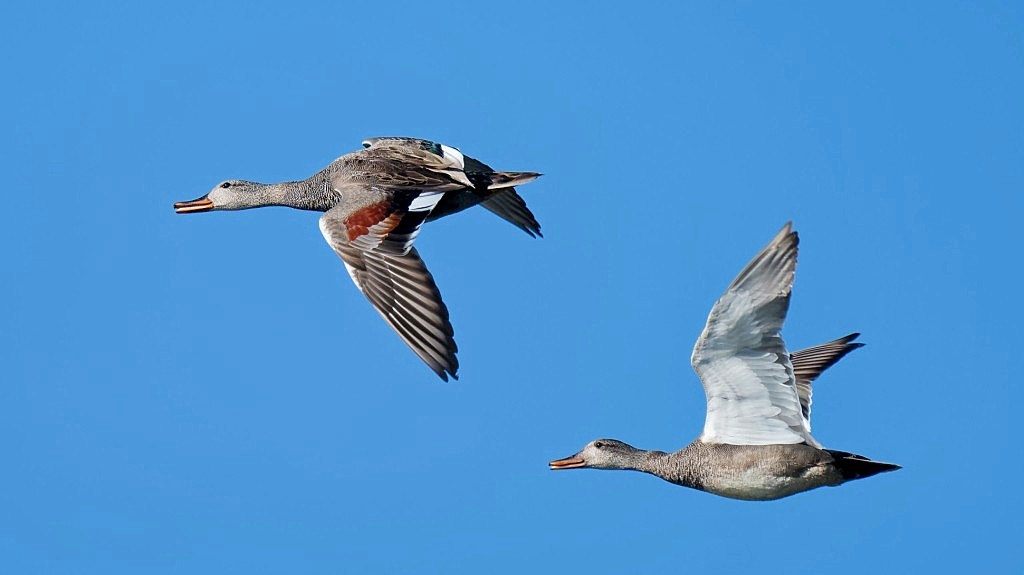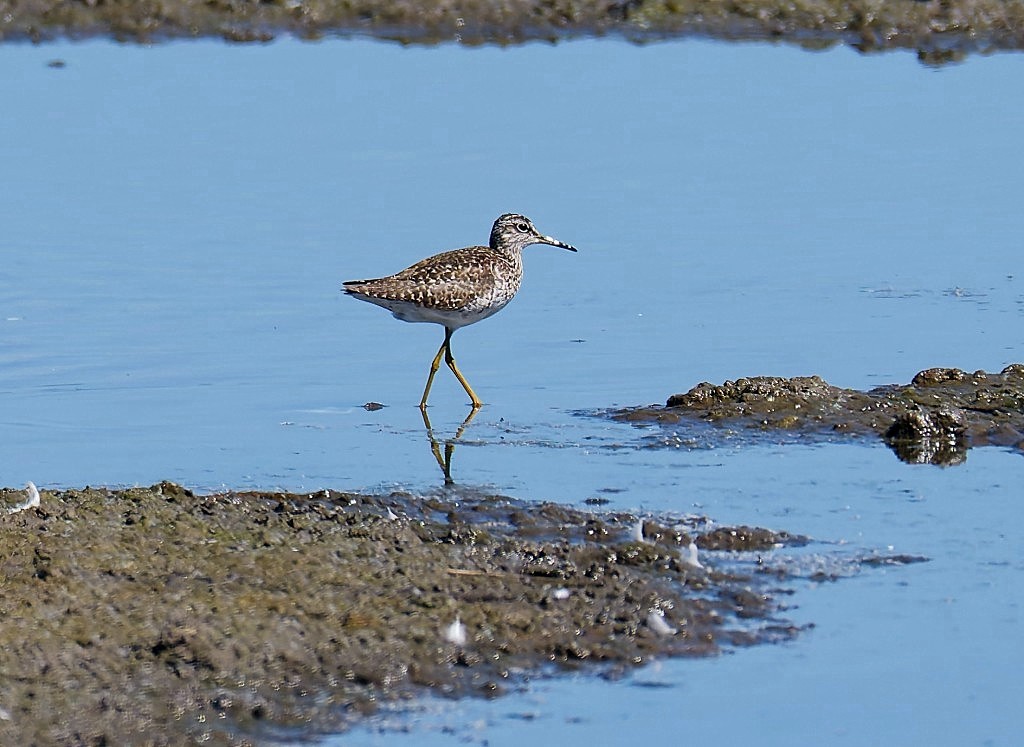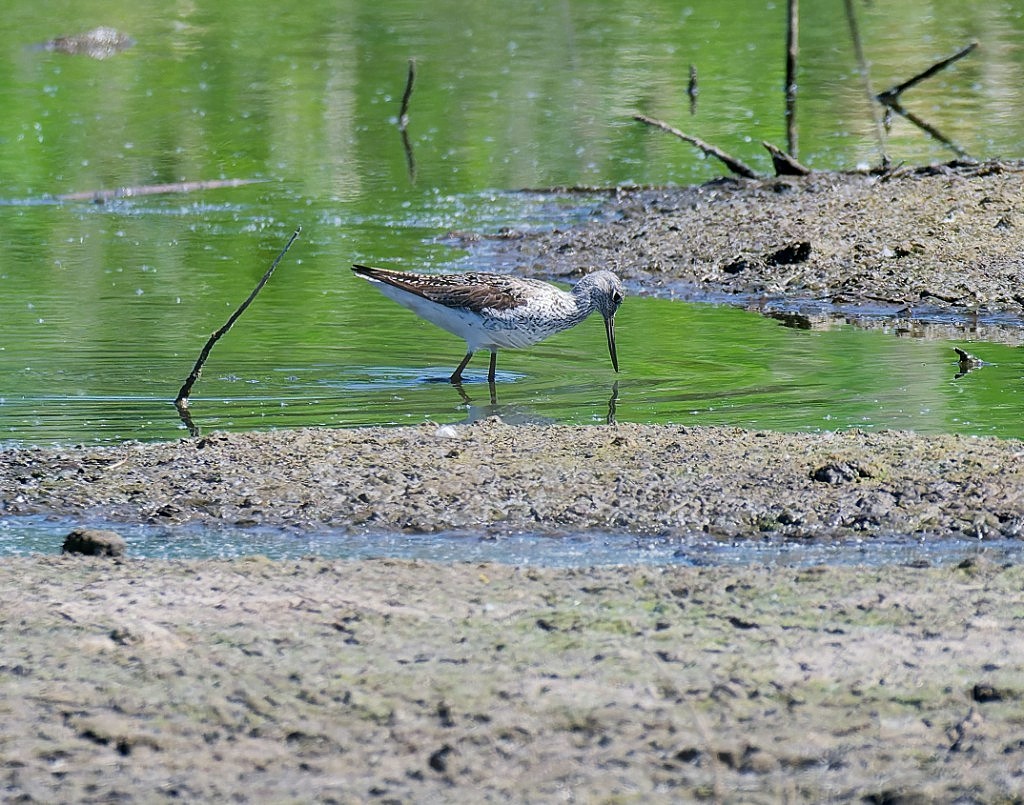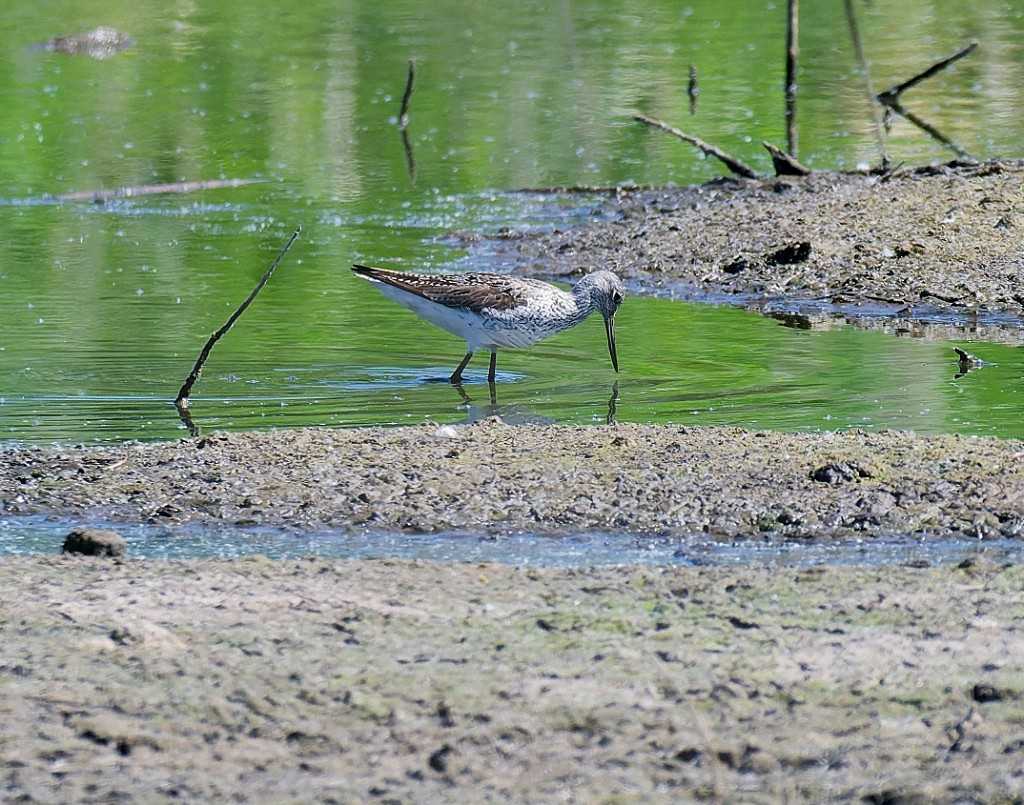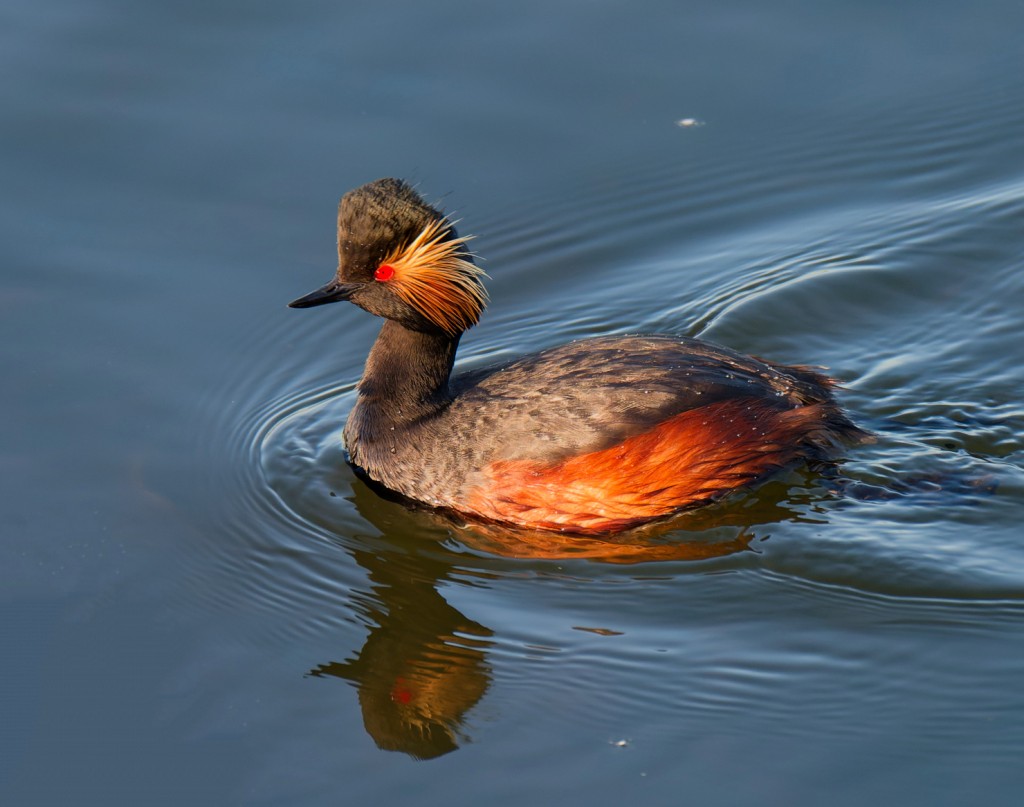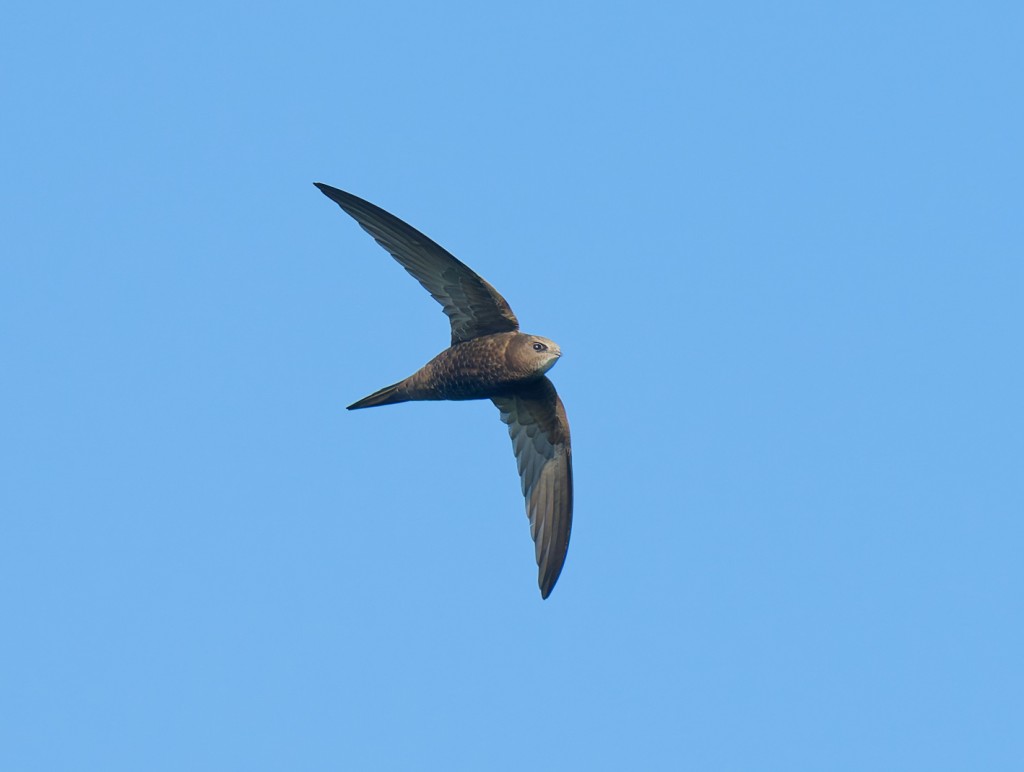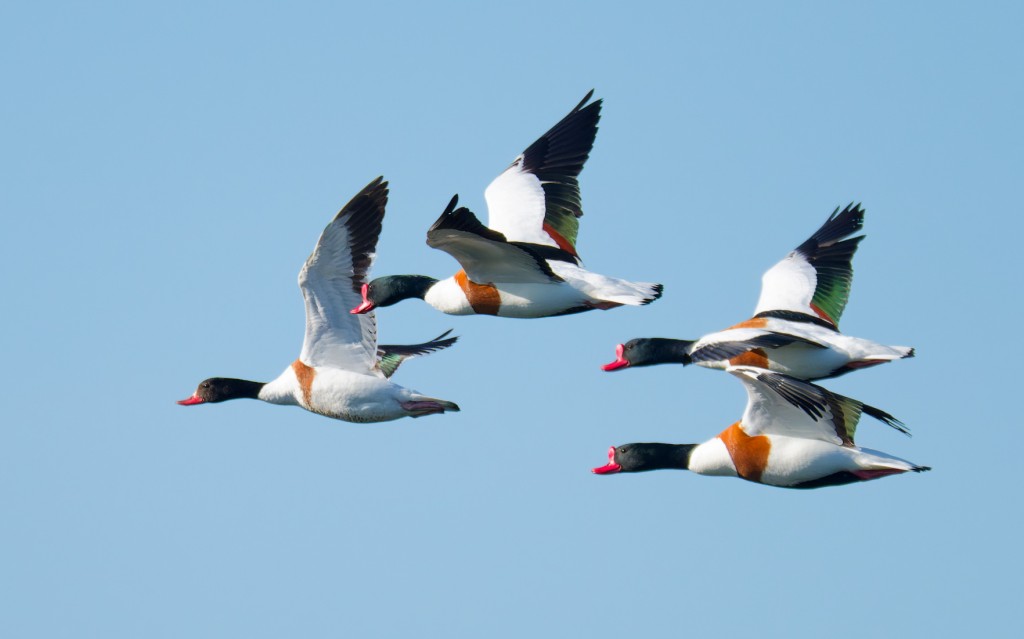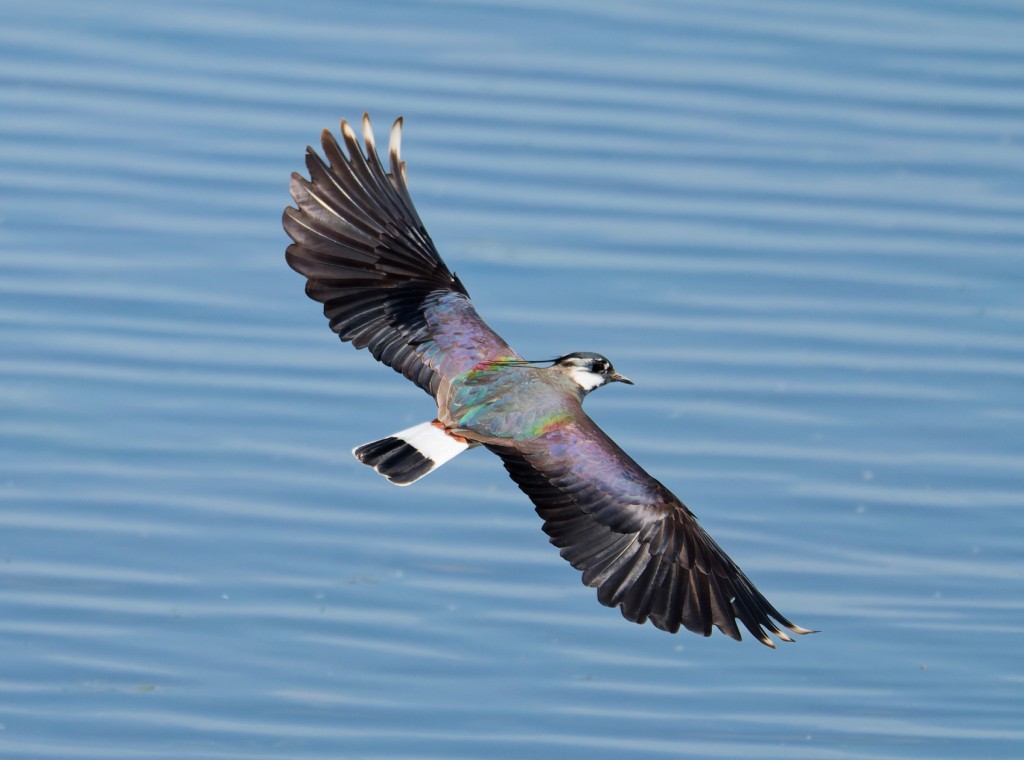Woolston Eyes Monthly Sightings
2025-05-24
After so much time lost to preparing the submission for our planning application for the No.4 bed viewing platform and two days interviewing for our new Assistant Warden post, it was a pleasure for me to just be out counting birds this morning. It was the monthly Wetland Birds Survey (WeBS), so all beds were covered with some great results. On No.4 bed a Cattle Egret flew through, for only our second record, with other notable sightings of 1 Ruff, 5 Little Egrets, 3 Black-tailed Godwits, 4 Common Terns and 54 Black-necked Grebes. Over on No.3 bed 2 drake Garganeys and a Greenshank were in front of the Morgan Hide, with another 5 Black-necked Grebes looking settled. All this along with many hundreds of the commoner water-birds made for an outstanding morning. As I was leaving it was nice to see 5 Red-eyed Damselflies, including a mating pair, at the usual site below the No.3 bed Footbridge. Photo of a Garganey Cheers David Bowman (with Dan Owen, Brian Baird and Sue Haddock)
Submitted by: David Bowman
2025-05-18
It was a bit of an up and down morning yesterday. We started on No.4 bed with a cool northerly and overcast skies. The conditions brought 140 Swifts and a few Swallows and Sand Martins down to feed at low level and it was great to see the Swifts whizzing past our ears on the the viewing platform. The were still a handful of waders present, with 2 Wood Sandpipers, a Ringed Plover, 4 Little Ringed Plovers, a couple of Oystercatchers and 3 Snipe. Anxiety was triggered, though, when a Mink swam into the middle of the main concentration of nesting Black-necked Grebes. We’ve already lost our Black-headed Gull colony on the bed, along with the first handful of Black-necked Grebe nests, presumably to the activities of Mink. Eventually, the adult grebes swam back to settle on nests but the concern remains. As the morning progressed the sun broke through, it became summer-like, a drake Garganey put in an appearance, the regular pair of Egyptian Geese flew in and the Barnacle Goose pair sailed past the platform with their four young in tow. Typically, shortly after we left at lunchtime an Osprey arrived on the bed but you can’t have everything! Photo of Barnacle Goose with brood Cheers David Bowman (with Dan Owen, Helen Wynn and Brian Baird)
Submitted by: David Bowman
2025-05-15
It was surprisingly cool early on No.4 bed with a steady northerly breeze blowing, though it was another hot one by lunchtime. There was little change in the waders present, with 5 Wood Sandpipers, 1 Greenshank, 2 Ringed Plovers, 4 Little Ringed Plovers, 3 Snipe and 2 Oystercatchers noted. A drake Garganey was a nice surprise, though and certainly more welcome than the 2 Ring-necked Parakeets which flew into the wet woodland, calling - won’t be long till we have them as a breeding species, I guess. Not that we’re short of feral breeding species, with the pair of Barnacle Geese currently having four young, the regular pair of Egyptian Geese looking likely to breed and more broods of Canada and Grelyag Geese than you could shake a stick at. So far, it looks like we might have record numbers of breeding Black-necked Grebes, so fingers crossed that they all survive. The warming sun eventually brought hundreds of dragonflies onto the wing, with our first Black-tailed Skimmers noted. The morning was nicely rounded off when a Hobby arrived to hawk for dragonflies, something which is now a daily occurrence in this warm weather. Photo of a Reed Warbler Cheers David Bowman (with Dan Owen)
Submitted by: David Bowman
2025-05-14
It’s been an excellent week, with the dry, un-seasonally hot weather lowering water levels and exposing more muddy margins for waders on No.4 bed Friday saw a male Hen Harrier reported flying over No.1 bed, while counts of Black-necked Grebes across Beds 3 and 4 indicated that at least 20 pairs were settled, many of which were visibly on nests. Tuesday then produced a nice flurry of waders on No.4 bed, with a Turnstone flying through and five Wood Sandpipers, Greenshank, Common Sandpiper, two Ringed Plovers and two Little Ringed Plovers feeding out on the mud. With the emergence of so many dragonflies Hobby is now a daily sighting, hawking for dragonflies over No.4 bed as they rise on the warming air. Record shot of a Wood Sandpiper Cheers David Bowman (with Dan Owen, Helen Wynn, Brian Baird and Ciara Bass)
Submitted by: David Bowman
2025-05-06
Yesterday brought some excitement to the Reserve, as David Spencer found a rare avian visitor on No.4 bed. He heard the distinctive fluting song of a Golden Oriole coming from the flooded woodland at the southern end of the wetland. Although the males, which this was, are Blackbird-sized and bright canary yellow, they are incredibly skulking and hard to see. They are summer migrants, wintering in Africa and breeding across temperate and southern continental Europe. After hours of diligent searching he eventually managed to see it and let other people know. We then spent a pleasant evening in the sunshine watching it, in some distant tall Willows, feeding on large caterpillars. Despite a frosty, dawn arrival this morning we were unable to relocate it, which is typical, as they rarely stay long before re-orienting themselves and heading back south. This was only the third record for the Reserve and a welcome addition to the year’s list. Other sightings over the two days included Wood Sandpiper, 2 Whinchats, Barn Owl, Little Egret and Yellow-legged Gull. Photo of Shelduck in courtship chase. Cheers David Bowman (with Dan Owen, David Spencer et al)
Submitted by: David Bowman
2025-05-03
The Spotted Flycatcher which was reported from No.3 bed yesterday brought the Reserve bird list to 143 species so far this year, which is an excellent total for the beginning of May. This morning saw a change in the weather, with the fresh, cool wind swinging to the north-west and overcast skies for most of the morning. These are ideal conditions for causing aerial feeders to pause their migration and congregate over good feeding sites and such was the case today, with counts across Beds 3 and 4 of 300 Swifts, 175 House Martins, 85 Sand Martins and 75 Swallows. A trickle of waders added to the interest on No.4 bed, with 1 Wood Sandpiper, 2 Black-tailed Godwits, 1 Common Sandpiper, 4 Little Ringed Plovers, 1 Oystercatcher and 1 Snipe, along with 2 adult Mediterranean Gulls and 2 Egyptian Geese. Our Black-necked Grebes continue to move in mysterious ways, with numbers on No.4 bed dropping to around 21 and at least 10 moving over onto No.3 bed. As ever, we’ll get a better handle on our breeding population when the broods start to appear, which shouldn’t be too long now. Photo of a Lapwing Cheers David Bowman (with Dan Owen, Helen Wynn and Brian Baird)
Submitted by: David Bowman

